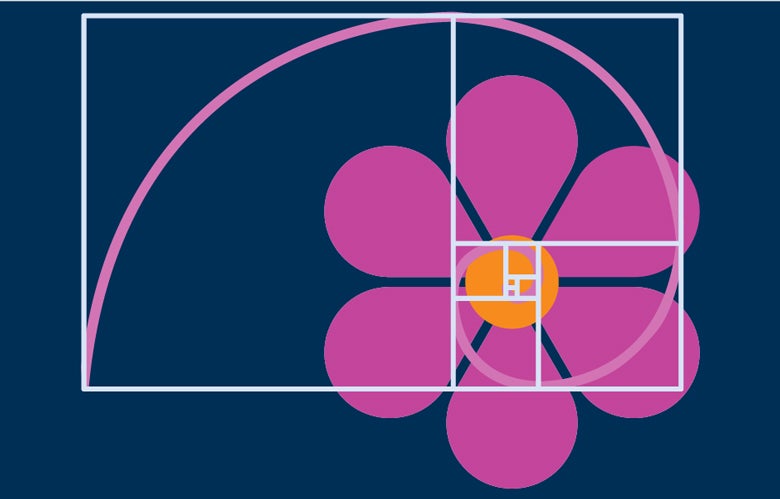Most of us have heard of the Golden Rule, the Golden Age of ancient Greece, the Golden Oldies musical genre, and even the Golden Girls. But have you heard of the golden ratio?
Also known as the Fibonacci Sequence, the golden ratio is a proportion based on a sequence of numbers in which each one equals the sum of the two numbers immediately preceding it. Named after Italian mathematician Leonardo Pisano, who was nicknamed Fibonacci, the sequence is 0, 1, 1, 2, 3, 5, 8, 13, 21, 34, 55 and so on. If you divide a Fibonacci number by the number just before it, you get the golden ratio of 1.618, which is represented by the Greek letter phi.
Building on the golden ratio, you can make a golden rectangle, in which the lengths of the sides match the golden ratio. By drawing arcs through opposite corners of connected golden rectangles, you will get the golden spiral.
That is very interesting math, but what does it mean in the real world?
The golden ratio shows up in all kinds of natural phenomena but also in human creations like architecture and artwork.
Some examples of the golden ratio in nature are seen in the spiraling pattern of seeds in a sunflower head, the scales of a pinecone, the unfurling of a growing fern and the chambers of a nautilus shell.
Likewise, the human body has many elements that show the golden ratio, including the sections of the human finger in relation to each other, the forearm in relation to the hand, facial features in relation to each other, the spiral of the ear and even the spirals of DNA.
The Fibonacci sequence and the golden ratio appear in our world in diverse forms. From human DNA strands to the Milky Way Galaxy, the proportions described in the golden ratio are seemingly everywhere.
The Fibonacci sequence and the golden ratio appear in our world in diverse forms. From human DNA strands to the Milky Way Galaxy, the proportions described in the golden ratio are seemingly everywhere.
The golden ratio shows up in some inanimate natural phenomena as well. The swirling pattern of hurricanes and the arms of spiral galaxies are just two examples.
Artists employ the golden ratio when creating their paintings and illustrations. Leonardo da Vinci’s Last Supper, Mary Cassat’s The Boating Party and Georges Seurat’s Bathers at Asnieres are just a few paintings composed using golden rectangles.
Similarly, people make use of the golden ratio in architecture, as in the pyramids of Giza, the Parthenon, the Taj Mahal and the Guggenheim Museum. What makes these structures feel aesthetically pleasing are the golden ratio proportions of one section to another.
Fibonacci numbers and the golden ratio play a role in music as well, from musical scales to the foundations of chords to the harmonics created by ratios of frequencies.
Interestingly, another human creation — the stock market — exhibits surprising golden ratio characteristics. Investors can use charting techniques such as Fibonacci retracements, Fibonacci arcs and Fibonacci fans to inform predictions of price movements in individual stocks or for the stock market.
The Fibonacci sequence and the golden ratio appear in our world in diverse forms. From human DNA strands to the Milky Way Galaxy, the proportions described in the golden ratio are seemingly everywhere.
You can learn more about the Fibonacci sequence and other famous mathematical formulas in Academic Search Ultimate and Applied Science & Technology Source Ultimate databases from EBSCO.
